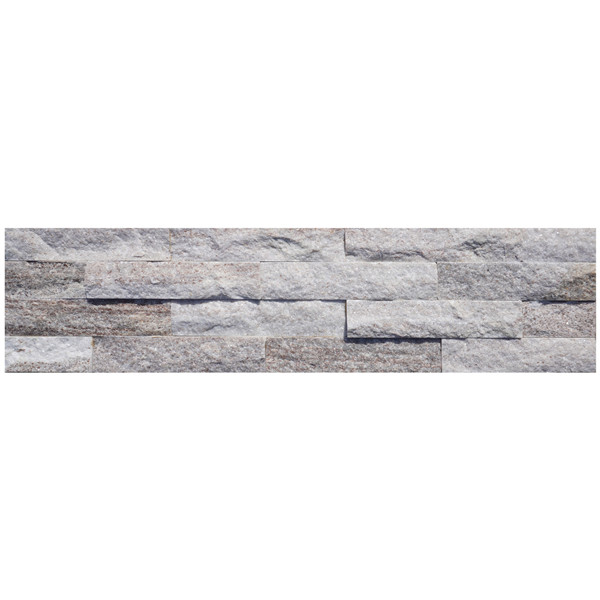Introduction
The kitchen is often considered the heart of the home, where families gather, meals are prepared, and memories are made. As such, it's important to create a space that is not only functional but also aesthetically pleasing. One way to elevate the look of your kitchen is by incorporating cultured stone into the design. Cultured stone, also known as manufactured stone, is a versatile and cost-effective material that can add a touch of elegance and sophistication to any kitchen. In this comprehensive guide, we will explore the benefits of using cultured stone in your kitchen, as well as provide tips and ideas for incorporating this beautiful material into your kitchen design.
Benefits of Cultured Stone in the Kitchen
Cultured stone offers a wide range of benefits when used in kitchen design. One of the primary advantages of cultured stone is its versatility. Cultured stone is available in a variety of colors, textures, and styles, making it easy to find the perfect option to complement your kitchen's aesthetic. Whether you prefer a sleek and modern look or a more rustic and traditional style, there is a cultured stone option that will suit your needs.
In addition to its versatility, cultured stone is also a durable and long-lasting material. Made from a mixture of natural stone aggregates and cement, cultured stone is resistant to chipping, cracking, and fading, making it an ideal choice for high-traffic areas such as the kitchen. Cultured stone is also low-maintenance, requiring minimal upkeep to keep it looking its best.
Another benefit of using cultured stone in the kitchen is its cost-effectiveness. Cultured stone is typically more affordable than natural stone, making it a budget-friendly option for homeowners looking to upgrade their kitchen without breaking the bank. Despite its lower cost, cultured stone can still provide the same luxurious look and feel as natural stone, making it a great value for the price.
Ideas for Incorporating Cultured Stone in Your Kitchen Design
There are countless ways to incorporate cultured stone into your kitchen design, from small accents to larger focal points. Here are some ideas to inspire you as you plan your cultured stone kitchen transformation:
1. Backsplash: One of the most popular ways to use cultured stone in the kitchen is as a backsplash. A cultured stone backsplash can add texture and visual interest to the space, while also providing a practical and easy-to-clean surface behind the stove and sink. Choose a neutral color for a subtle look, or opt for a bold hue to make a statement.
2. Island: Another great way to incorporate cultured stone into your kitchen is by using it to create a stunning island. Cultured stone can be used to cover the base of the island, creating a beautiful focal point in the room. ledgestone sale with a contrasting countertop for a modern look, or opt for a matching material for a cohesive design.
3. Range Hood: A range hood clad in cultured stone can add a touch of elegance and sophistication to your kitchen. Choose a stone that complements your countertops and backsplash for a cohesive look, or go for a striking contrast for added visual interest.
4. Accent Wall: If you're looking to make a bold statement in your kitchen, consider creating an accent wall using cultured stone. Whether you choose to cover the entire wall or just a portion, a cultured stone accent wall can add texture and depth to the space, creating a focal point that draws the eye.
5. Fireplace: If your kitchen has a fireplace, consider using cultured stone to update the look and give it a fresh new feel. Cultured stone can be used to create a beautiful surround for the fireplace, adding warmth and character to the room.
Tips for Installing Cultured Stone in Your Kitchen
When installing cultured stone in your kitchen, it's important to follow the manufacturer's guidelines to ensure a successful and long-lasting installation. Here are some tips to help you get started:
1. Prepare the Surface: Before installing cultured stone, make sure the surface is clean, dry, and free of dust and debris. If necessary, use a primer or bonding agent to ensure proper adhesion.
2. Plan the Layout: Before you begin installing the stone, take the time to plan out the layout to ensure a seamless and professional-looking finish. Consider the size and shape of the stones, as well as the pattern and grout lines.

3. Use the Right Tools: To install cultured stone, you will need a few basic tools, including a trowel, mortar mix, grout, and a level. Make sure you have the right tools on hand before you begin the installation process.
4. Start from the Bottom: When installing cultured stone, it's best to start from the bottom and work your way up. This will help ensure a level and even installation, and prevent any gaps or uneven seams.
5. Seal the Stone: Once the cultured stone is installed, be sure to seal it with a high-quality sealant to protect it from stains and moisture. Follow the manufacturer's recommendations for sealing and maintenance to keep your cultured stone looking its best.
Conclusion
Incorporating cultured stone into your kitchen design is a great way to add style, sophistication, and durability to the space. With its versatility, cost-effectiveness, and low-maintenance nature, cultured stone is an ideal choice for homeowners looking to upgrade their kitchen without breaking the bank. Whether you choose to use cultured stone as a backsplash, on an island, as a range hood, or as an accent wall, there are countless ways to incorporate this beautiful material into your kitchen design. By following the tips and ideas outlined in this guide, you can create a stunning cultured stone kitchen that you'll love for years to come.
